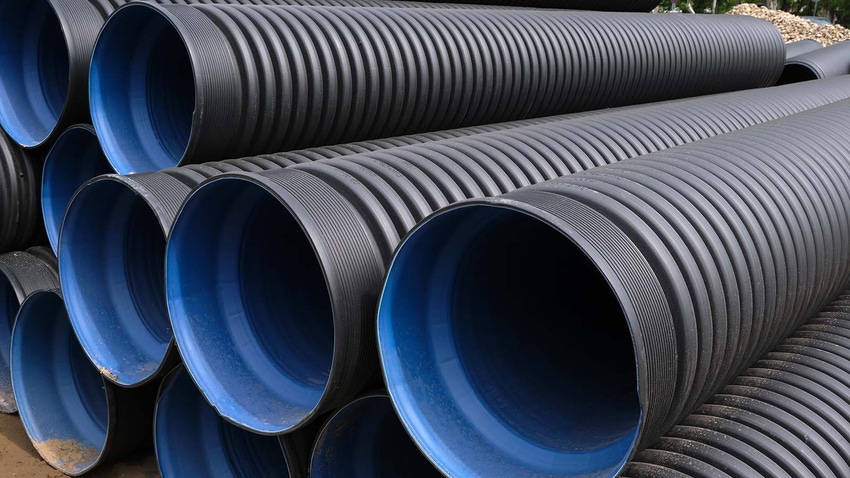Plastic Pipe Market Poised for 3% Annual Growth
Global demand is strongest for agricultural and potable water applications.
December 1, 2023

At a Glance
- Growth varies by region, material, and applications
- Agricultural pipe applications expected to grow about 3.8% annually through 2032
- Plastic pipes a lightweight, easy to install alternative to concrete or metal pipes
Demand for plastic pipe, particularly in North America, is poised for solid growth in the near future, according to a new market report by German industry analyst Ceresana.
The new, sixth-edition “Market Study: Plastic Pipes” projects 3% average annual growth in the plastic pipe segment, varying by region, as well as by materials and applications.
Demand lags in Western Europe, China
In Western Europe, demand for plastic pipes is not expected to exceed 2021’s level until 2025. Meanwhile, China’s construction industry is fairly steady and not poised to build on previous record usage.
Demand is growing most intensely in the areas of potable water and agriculture, the report found. Global demand for agricultural pipe applications is expected to grow about 3.8% annually through 2032. In regions experiencing extreme weather — for example, heavy rainfall or drought — dense, low-cost plastic pipes are critical to protecting the environment by removing wastewater while ensuring access to gas supplies and drinking water.
Plastic pipes are also critical to accelerating the switch to renewable energies, the report found, particularly by fostering development of hydrogen networks. And for communications, plastic pipes are a low-maintenance solution to protect fiber-optic cable networks, power lines, and other electrical cables.
Compared to metal or concrete pipes, plastic pipes are a lightweight, easy to install alternative that provides superior performance by resisting corrosion and chemicals.
PVC remains dominant material
PVC pipes still dominate, the report noted, particularly chlorinated variants that provide more flexibility and heat resistance. That said, polyethylene (PE) pipes are offering a competitive alternative, especially for gas pipes and industrial applications. Cross-linked PE — known as PE-X, XPE, or XLPE — is particularly flexible and durable.
Demand is also particularly dynamic for heat-resistant polypropylene (PP) pipes and pipes made of other plastics — including ABS with high impact and temperature resistance. Recycled plastics and bioplastics are also emerging as options.
About the Author(s)
You May Also Like


